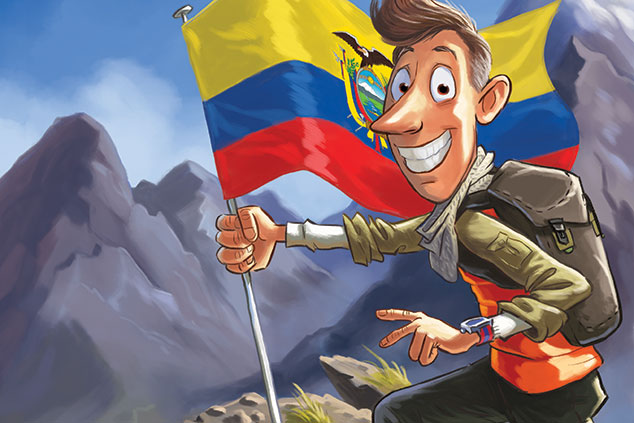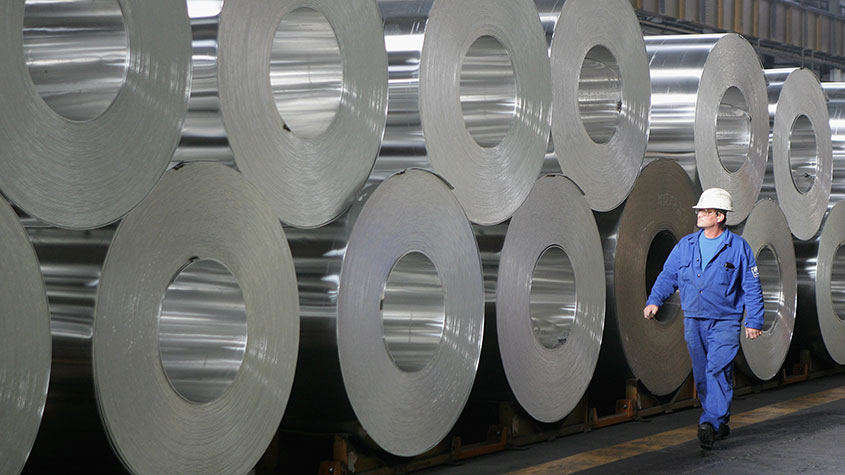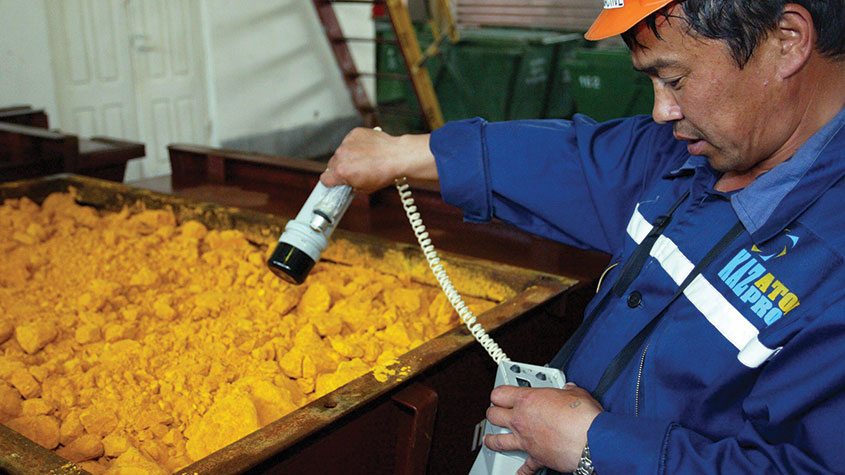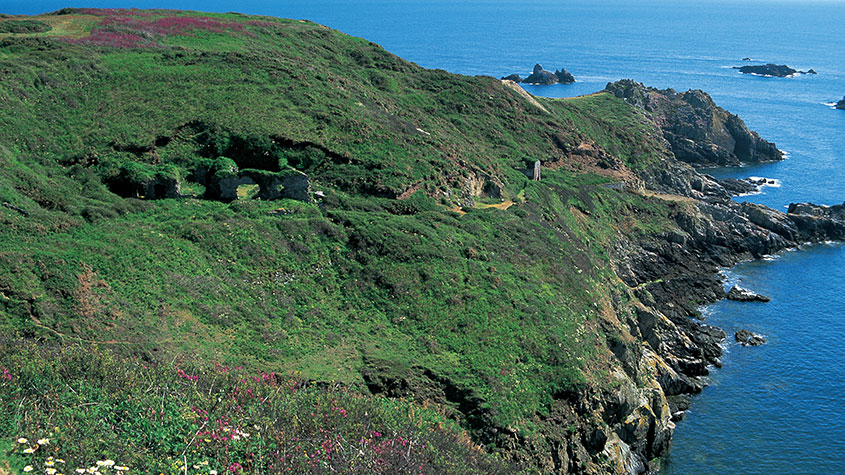Ecuador’s El Dorado: be brave and beat the crowd to the boom
Ecuador is finally set to cash in on its vast metals deposits. The domestic political backdrop has stabilised and international investors are beginning to take note, says James McKeigue.


Ecuador is the biggest anomaly in international mining. It sits plum in the middle of the rich metallic belt that runs along the Andes mountain range, where other countries, such as Chile, Peru and Colombia, have built world-class mining industries. Yet until this year Ecuador didn't have a single large-scale mine.
Over the last decade more gold and copper have been found in Ecuador than anywhere else on earth. But as so often in this industry, the risks above ground outweighed the riches below it. Political and economic factors prevented the development of a modern mining sector. But as its neighbours grew rich from mining, it became harder for Ecuador to ignore its rich reserves of copper, gold, and silver. In the last few years the country has opened up to mining. That's led to a modern-day gold rush, with 12 of the world's largest mining companies setting up offices in Ecuador and the country's first two large-scale mines one copper, one gold entering production this year.
I first wrote about Ecuador's mining sector for MoneyWeek in 2013. But then there was no way for private investors to gain direct exposure to the story. Now there is (see below).
MoneyWeek
Subscribe to MoneyWeek today and get your first six magazine issues absolutely FREE

Sign up to Money Morning
Don't miss the latest investment and personal finances news, market analysis, plus money-saving tips with our free twice-daily newsletter
Don't miss the latest investment and personal finances news, market analysis, plus money-saving tips with our free twice-daily newsletter
Ecuador: a potential world-beater
You won't find Ecuador in any of the global top rankings for metals production and reserves. The United States Geological Service (USGS), which has excellent data on international mining, doesn't rank Ecuador in its top ten for gold, copper or silver. The reason, as the USGS readily admits, is that only about 10% of Ecuador has been explored for mining. But even that small amount of surveying has been enough to yield some major discoveries. In 2006 Canadian miner Kinross found Fruta del Norte, home to around five million ounces of gold and six million ounces of silver. Then in 2012 SolGold discovered Alpala, a deposit that grows with each new drilling campaign and currently has inferred resources of 2.5 million tonnes of copper and 3.8 million ounces of gold. To give you some idea of the scale of the discovery, if fully developed it could become the largest underground silver, third-largest gold and sixth-largest copper mine in the world.
The big names rush in
These discoveries have tempted some of the biggest names in mining into the Ecuadorian gold rush. BHP, Newcrest Mining, Anglo American, First Quantum Minerals and Fortescue Metals Group are among those that have acquired stakes in smaller Ecuador-focused exploration firms. Indeed, 12 of the world's biggest mining firms have bought in to Ecuadorian projects or set up offices there in recent years.
The strange thing about today's Ecuadorian gold rush is that people have always believed it has lots of gold, copper and silver. Ecuador sits on the Andean copper belt, which is responsible for almost half the world's copper production. And gold has been mined since the 15th century. Yellow metal mined from the south of modern-day Ecuador, in a province that is now called El Oro, was turned into intricate religious and ceremonial jewellery prized by the Incan ruling class. Yet despite half-hearted attempts by the Spanish and then other international investors after Ecuador's independence in the 19th century, the country never fostered the type of large-scale mining industry that arose in other South American countries.
Ecuador's socialist firebrand sees the light
That may be because Ecuador had so many other export industries to develop. During the 19th century its economy was powered by coffee and cacao exports; in the 20th, oil, banana and shrimp were added to the mix. Mining remained small scale, with an array of locally owned projects. Various attempts by foreign miners to establish large operations during the 20th century were thwarted as political instability brought radical changes in mining policy.
The indifference towards mining turned to outright hostility in the early years of the government of Rafael Correa, the socialist firebrand who ruled Ecuador from 2007 to 2017. Buoyed by high oil prices and fresh from defaulting on the country's sovereign debt in 2008, Correa imposed strict new terms and extra taxes on the few international miners in the country. Unsurprisingly, most left.
But Correa changed his tune when low oil prices started to drag down the Ecuadorian economy. Oil is a big deal in Ecuador, generating 50%of export earnings and 25% of government revenues. Moreover, because Ecuador's economy is dollarised a banking crisis and hyperinflation did for its ill-fated sucre in 2000 it is particularly dependent on oil. Ecuador needs a constant inflow of dollars to provide money for government spending. When the oil price fell, Ecuador was suddenly running fiscal and current-account deficits. The state, which doubled in size under Correa, wasn't getting enough tax dollars to cover its outgoings, while the economy was importing more than it was exporting. Twin deficits are manageable when you have your own currency the UK has been doing it for more than a decade but a nightmare when you use someone else's.
Correa found himself in desperate need of dollars. In the short term he used opaque oil-backed loans from China to fund government spending. Drastic import tariffs helped curb the trade imbalance. However, he understood that neither was sustainable in the long term. He needed something that could generate both export dollars and government taxes and there was only one solution: mining.
Opening up the mining sector
In a remarkable volte-face, the man who once boasted that Ecuador had the world's strictest mining regulation invited US-owned consultancy Wood Mackenzie to redraw its mining code and royalty system. The new investor-friendly mining code was enough to convince junior explorers and between March 2017 and December 2018, 275 mining concessions were granted. Direct investment in Ecuadorian mining grew from an annual average of $45m before the change, to $743m last year.
Correa's handpicked successor, Lenn Moreno, has been decidedly more pro-market than expected since 2017 and has extended his predecessor's mining push with gusto. But it hasn't been smooth sailing. With Correa mortgaging future oil production to the hilt, Moreno was forced to seek an IMF bailout. Getting the $10bn loan from the IMF and the multilaterals was the easy part, implementing the austerity they demanded in exchange has proved difficult. President Moreno's recent attempts to remove long-standing fuel subsidies sparked violent protests from a small, but well-organised, minority. Led by indigenous movements from Ecuador's highlands, the protestors forced Moreno to quit the capital and he only returned after agreeing to reinstate the subsidy.
A buying opportunity
The shares of the Ecuador-focused miners dived amid the protests as investors rightly worried about the impact on the sector. The protests underline the weakness of the main force backing mining in Ecuador the central government and highlighted the political strength of its opponents; many projects are in highland areas with indigenous local communities. Mining has also had to deal with local communities holding referendums to ban the industry in their town or province. These have been rejected by the Constitutional Court the highest in the land as mining, like Ecuador's oil industry, falls under the aegis of the central government. These legal challenges and violent protests are scary for investors, but they provide attractive buying opportunities. I've just come back from six weeks in Ecuador, interviewing government ministers, local CEOs and international investors. The genie is out of the bottle and modern, large-scale mining is in Ecuador to stay, as its people want the jobs and economic growth that mining can bring.
Moreover, the polls indicate that Moreno's administration will be replaced by centre-right opposition in the 2021 general elections. Even if Correa returns he could only do so as vice president the pragmatic populist would look to reap the benefits of a mining boom that he started.
Most of the bravest investment calls remember the hedge funds that bet against subprime mortgages before the 2008 financial crisis involve spotting a situation that is unsustainable. A mix of political and economic factors made Ecuador leave the world's last great deposits of gold, silver and copper untouched. But its dollar-hungry economy won't ignore international investors for much longer.
The mining stocks worth a punt
Investors need to have a time horizon of at least five years and be prepared to take on plenty of risk. The least-risky bet there are no safe bets in Ecuadorian mining is Canada-listed $1.3bn market-cap goldminer Lundin Gold (TSE: LUG). Backed by swashbuckling Swedish natural resources investor Lukas Lundin, who has set up mining and oil companies in frontier markets around the world, it bought the Fruta del Norte project from Kinross in 2014.
Since then it has managed to build a mine that should go into production before the year is out. It's the listed Ecuadorian pure-play closest to operating. Once that mine is up and running, it has further exploration potential around the site.
Riskier, but with more upside, is London-listed SolGold (LSE: SOLG), the only UK-listed Ecuadorian pure play. The firm's main target is 85%-owned Alpala, which it expects to turn into an operating mine by 2024. But it also has the most extensive exploration portfolio in the country with 11 more targets identified, of which the company expects five more to become mines.
If you do decide to invest you'll be in good company, as majors BHP Billiton and Newcrest have already bought big stakes in SolGold. Moreover, the recent sell-off means you can pick up SolGold for 20p a share a big saving on the 45p that BHP paid.
If you want to take a broader approach you could take stakes in a range of Canada-listed, Ecuador-focused explorers and hope that one or two pan out. In this context, consider Cornerstone Capital Resources (TSX-Venture Exchange: CGP), which owns 15% of the Alpala project, Core Gold (TSX-Venture-Exchange: CGLD), and Lumina Gold (TSX-Venture Exchange: LUM).
Get the latest financial news, insights and expert analysis from our award-winning MoneyWeek team, to help you understand what really matters when it comes to your finances.
James graduated from Keele University with a BA (Hons) in English literature and history, and has a certificate in journalism from the NCTJ.
James has worked as a freelance journalist in various Latin American countries.He also had a spell at ITV, as welll as wring for Television Business International and covering the European equity markets for the Forbes.com London bureau.
James has travelled extensively in emerging markets, reporting for international energy magazines such as Oil and Gas Investor, and institutional publications such as the Commonwealth Business Environment Report.
He is currently the managing editor of LatAm INVESTOR, the UK's only Latin American finance magazine.
-
 Why Trustpilot is a stock to watch for e-commerce exposure
Why Trustpilot is a stock to watch for e-commerce exposureTrustpilot has built a defensible position in one of the most critical areas of the internet: the infrastructure of trust, says Jamie Ward
-
 Tetragon Financial: An investment trust with stellar returns
Tetragon Financial: An investment trust with stellar returnsTetragon Financial has performed very well, but it won't appeal to most investors – there are clear reasons for the huge discount, says Rupert Hargreaves
-
 Invest in space: the final frontier for investors
Invest in space: the final frontier for investorsCover Story Matthew Partridge takes a look at how to invest in space, and explores the top stocks to buy to build exposure to this rapidly expanding sector.
-
 These 2 stocks are set to soar
These 2 stocks are set to soarTips The returns from these two aluminium and tin stocks could be spectacular when the commodity cycle turns says David J Stevenson.
-
 Invest in Brazil as the country gets set for growth
Invest in Brazil as the country gets set for growthCover Story It’s time to invest in Brazil as the economic powerhouse looks set to profit from the two key trends of the next 20 years: the global energy transition and population growth, says James McKeigue.
-
 5 of the world’s best stocks
5 of the world’s best stocksCover Story Here are five of the world’s best stocks according to Rupert Hargreaves. He believes all of these businesses have unique advantages that will help them grow.
-
 The best British tech stocks from a thriving sector
The best British tech stocks from a thriving sectorCover Story Move over, Silicon Valley. Over the past two decades the UK has become one of the main global hubs for tech start-ups. Matthew Partridge explains why, and highlights the most promising investments.
-
 Could gold be the basis for a new global currency?
Could gold be the basis for a new global currency?Cover Story Gold has always been the most reliable form of money. Now collaboration between China and Russia could lead to a new gold-backed means of exchange – giving prices a big boost, says Dominic Frisby
-
 The best ways to buy strategic metals
The best ways to buy strategic metalsTips Weaker prices for strategic metals in the alternative-energy sector are an investment opportunity, says David Stevenson. Here, he picks some of the best ways to buy in.
-
 A lesson for investors from a ill-fated silver mine
A lesson for investors from a ill-fated silver mineAnalysis Mining methods may have changed since the industry’s early days, but the business hasn’t – digging ore from the ground and selling it at a profit. The trouble is, says Dominic Frisby, the scams haven't changed either.
